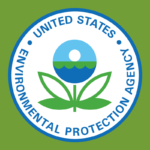 The Environmental Protection Agency (EPA) recently announced it was eliminating the mandatory requirement to provide newspaper notice of permitting and implementation actions under the Clean Air Act (CAA). The rule, which will take effect 30 days after it is published in the Federal Register, requires notification on EPA’s new “National Public Notices Website” and allows other agencies that implement EPA-approved CAA programs to publish notices on their websites as well.
The Environmental Protection Agency (EPA) recently announced it was eliminating the mandatory requirement to provide newspaper notice of permitting and implementation actions under the Clean Air Act (CAA). The rule, which will take effect 30 days after it is published in the Federal Register, requires notification on EPA’s new “National Public Notices Website” and allows other agencies that implement EPA-approved CAA programs to publish notices on their websites as well.
The rule doesn’t prevent permitting authorities from supplementing notice on their own websites with newspaper notice. In addition, it doesn’t override state laws requiring state and local environmental agencies to use newspapers to notify the public about EPA-approved permitting actions under the CAA. In those states, new laws would have to be passed to eliminate the newspaper-notice requirement.
EPA responded at length to comments PNRC submitted earlier this year (PDF) in response to the agency’s original proposal. (See pp. 28-38 of this “Internet version” of the rule (PDF) obtained by PNRC.) EPA appears to have been most sensitive to PNRC’s argument that eliminating newspaper notice would disadvantage rural, elderly and low-income Americans without Internet access. But the agency swept aside those concerns by citing a 2010 study that showed 44 percent of citizens “living below the poverty line” use library computers.
“We do not dispute that some individuals may continue to rely on newspapers rather than the Internet to obtain information and that there may be greater concentrations of such persons in some communities,” the agency said. “However … this does not take away the added benefits cited by other commenters of reaching additional individuals through the Internet and providing notice continuously during the public comment period.”
EPA disagreed with PNRC’s contention that public notices should be published by independent third parties, not the government agencies whose actions are subject to notification. But rather than address this “fox guarding the henhouse” argument, EPA noted instead that “(PNRC) has not demonstrated that newspapers generally exercise independent editorial control over the content of legal notices or … otherwise seek to check the veracity of what the newspaper company is paid to print in these sections of its publication.”
EPA was persuaded by PNRC’s arguments that public notices published in newspapers can provide verification that is absent on the web, and that EPA.gov doesn’t presently include hyperlinks referring users to the agency’s public notices. In response to those concerns, EPA adopted recommendations that weren’t included in its original proposal, encouraging permitting authorities to “certify” e-notice dates and “include hyperlinks” to public notices on their websites.
Perhaps the most surprising aspect of the new rule was EPA’s announcement that since mid-2015 it has been developing a “National Public Notices Website” to publish notices for all EPA actions subject to notice requirements. The agency expects the website to be completed and implemented by the end of the year, and it welcomed other permitting authorities to review the site for best practices. This announcement tells us, of course, that EPA began developing the site about six months before it issued its proposal to eliminate newspaper notice, but decided not to mention it until now.
The new rule follows the Obama Administration’s 2011 Executive Order requiring federal agencies to “end unnecessary printing” by “making information available online for the public.”
